Social media marketing for a nonprofit organization constitutes similar fundamentals that most of the businesses would implement. However, one key difference in their marketing strategy lies in the objectives of their marketing plan that they set out to achieve.
Unlike the marketing plans for businesses that may focus on increasing sales and revenue, nonprofit social media marketing plans aim at raising inspiration, motivation, and awareness for social causes and charity events.
If your nonprofit aims to fuel a movement of change, you need to reach a lot of people. Social media makes that possible for you – it allows your nonprofit to grow followers, engage them in discussions, and encourage them to take action, both online and offline. Social Media Engagement for nonprofits can prove really helpful as they'll be able to convey their goals, agendas and have a chance to reach out to people to convince them of their cause.
The challenge, however, is not that nonprofits don't understand the potential of social media. The biggest issue is the time they have to spend on social media is limited.
According to a survey from Hubspot, around half of all nonprofits spend two hours or less each week on marketing.
Why Is This A Problem
Due to the shortage of time, the vast majority of nonprofits are failing to have a documented social media strategy in place. What more? They are not able to measure the effectiveness of their social media efforts.They are unable to determine if their efforts are paying off and yielding any positive results.
However, in spite of all these shortcomings, there exist some nonprofits that are setting outstanding precedents in the social media landscape. One such reputable NGO proving that nonprofit social media marketing does not have to be this chaotic is Red Cross.
Red Cross needs no introduction. The humanitarian organization is driven by a people-powered movement campaigning to protect human life and health, ensuring respect for all human beings, and alleviating human suffering.
For the Red Cross, social media had been a gateway to advance their overall mission. With over 97 million volunteers, members and staff worldwide, Red Cross has an effective social media strategy in place that empowers them to reach and inspire their massive audience to action.
We analyzed RED CROSS' social media strategy for their 'End Home Fire campaign'. As we go ahead with outlining the steps to craft an effective strategy, the methods and tricks used by Red Cross mentioned in this social media marketing guide for nonprofits will guide your way.
1. Define Your Nonprofit's Goals
Social media provides an opportunity to tell your story and engage with your supporters. To make sure that people feel that connection with your nonprofit's story and are compelled to take action, you have to be very clear about what your mission and vision is, how you want to put it across and to whom you are appealing. Similarly, it is essential to set social media goals that align with your organization's mission and vision.
For instance, Red Cross is doing it just right! They have their mission in place and have prepared a list of goals they want to achieve from their End Home Fire campaign.
The idea behind the Red Cross' End Home Fire campaign is to:
- Help save lives by installing free smoke alarms in homes that don't have them
- Educate people about home fire safety
- Raise funds for lifesaving services during the course of events such as Sound the Alarm home fire safety and smoke alarm installations

To spread this idea, they are capturing the power of social media extensively to strengthen their community of supporters, educating people about home fire safety and raising funds as well.
Likewise, your social goals should be clear. Here I've listed a few possible goals that can carve your social efforts:
- Increase Brand Awareness
- Build Trust And Relationships
- Community Engagement And Education
- Reputation Management
- Imparting General Awareness
- Fundraising
- Increase Membership and Volunteers
Thus, before you start using social media for your nonprofit organization, make sure that you have prepared a list of goals you want to achieve and plan your social media marketing strategy accordingly.
2. Understand Your Nonprofit's Target Audience
Once you’ve determined your goals, the next important part of forming an effective nonprofit social media strategy is understanding your target audience.
Have you ever put time and energy into a campaign and totally missed your engagement or fundraising goal? I'm sure it would have been a horrible experience.
Remember, donors or volunteers would prefer not to know your story simply because they consider your work to be necessary. But the truth is you have to give people the kind of content that grabs their attention or the content they enjoy on a deep, personal level. Your content should give a clear call to action..
What more? To endow them with what they need, you need to get to know them better. Here are a few ways to get started:
- Use Google Analytics to analyze your readership and the posts they love which would help you understand the causes or campaigns that appeal to them
- Make a list of your target audience demographics (age, sex, education, nationality) and psychographics (habits, hobbies, values)
- You may also interview your current audience to understand what matters to them. Getting feedback forms or questionnaires filled will help you gather the data to conduct a detailed survey on the matter and an in-depth analysis.
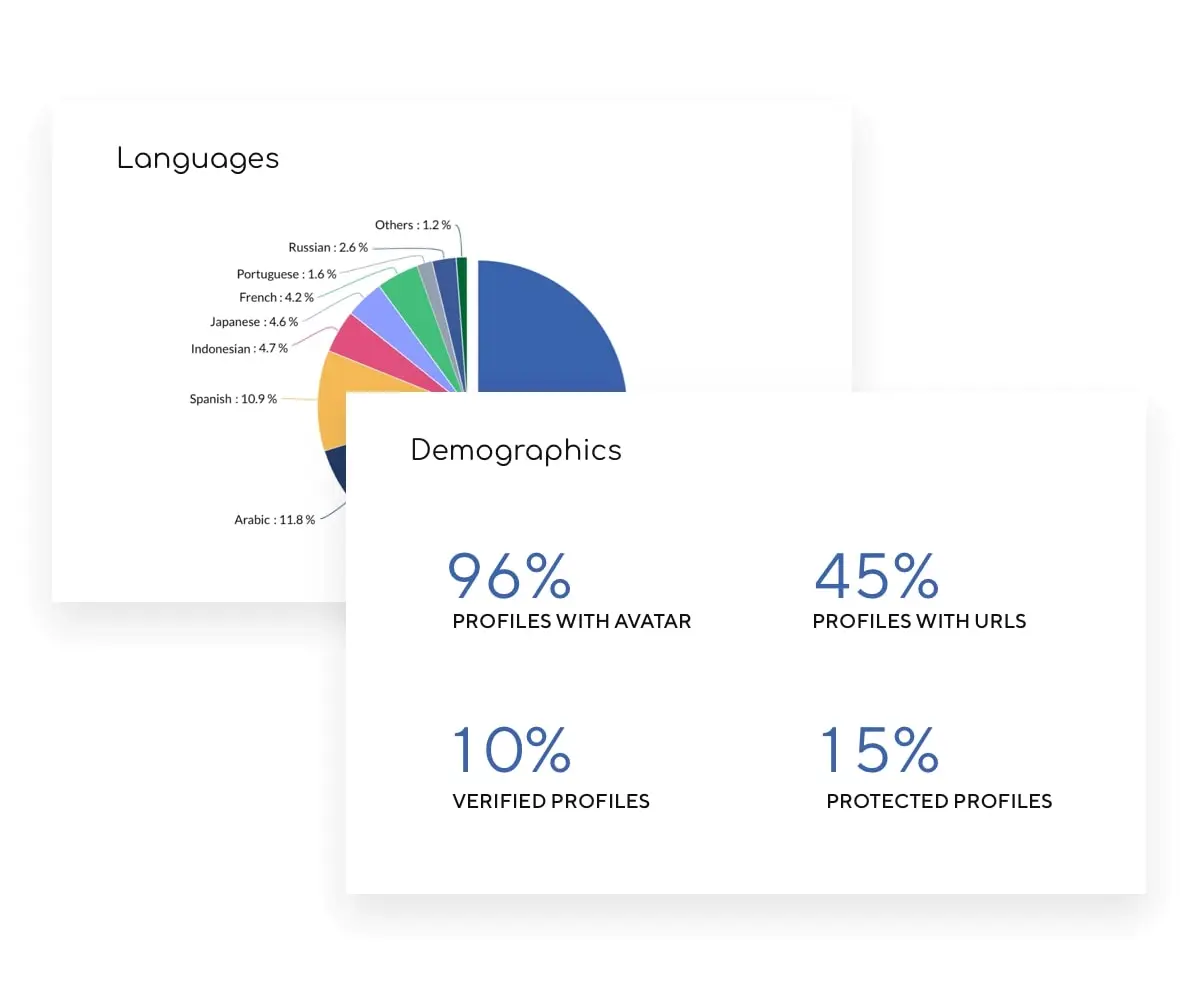
To learn about the demographics of your current social media followers, you can use native analytics on social platforms like Twitter, Facebook, and Instagram or use a social media management tool. When you start a free trial of Statusbrew and connect your social media accounts, your audiences’ demographic data will be updated, which can be seen easily in your dashboard.
3. Identify The Right Networks
Instead of adopting every social network that comes up your way, you can start by focusing on the most important social networks with a significant potential for reaching your audience.
To get a sense of which social networks your target audience is on, check out this post on social media demographics by Jay Goldberg where he has broken down the demographics of every major social network.
Also, you can choose the right network for your nonprofit by analyzing what other similar NGOs are using. Here I've mentioned two social networks that NGOs frequently use to promote their message:
-
Facebook: With over 2.93 billion monthly active users, using Facebook for nonprofits is one of the easiest and most effective ways to leap into social media. In fact, 98% of nonprofits are already using Facebook.
But due to the decline in organic reach on Facebook, many nonprofits are facing challenges to gain engagement on posts.
-
Twitter: Many nonprofits are on Twitter, but few have been able to tap the potential of this platform. Researches show that NGOs using Twitter raise much more funds online than those not using it. Apart from helping you raise funds, Twitter can also result in increased awareness about a cause, more active volunteer engagement, brand-building, and so much more. It has a massive reach and is growing at a fast pace providing you the potential to reach out to a massive audience.
One way to tap the potential of this platform is by following the example of Red Cross' Home Fire campaign.
Red Cross incorporates great call-to-actions (CTAs) not only in their tweets but also on their cover photo. The prominence of the hashtag #EndHomeFires makes it easy for users to connect with the cause and take an action.
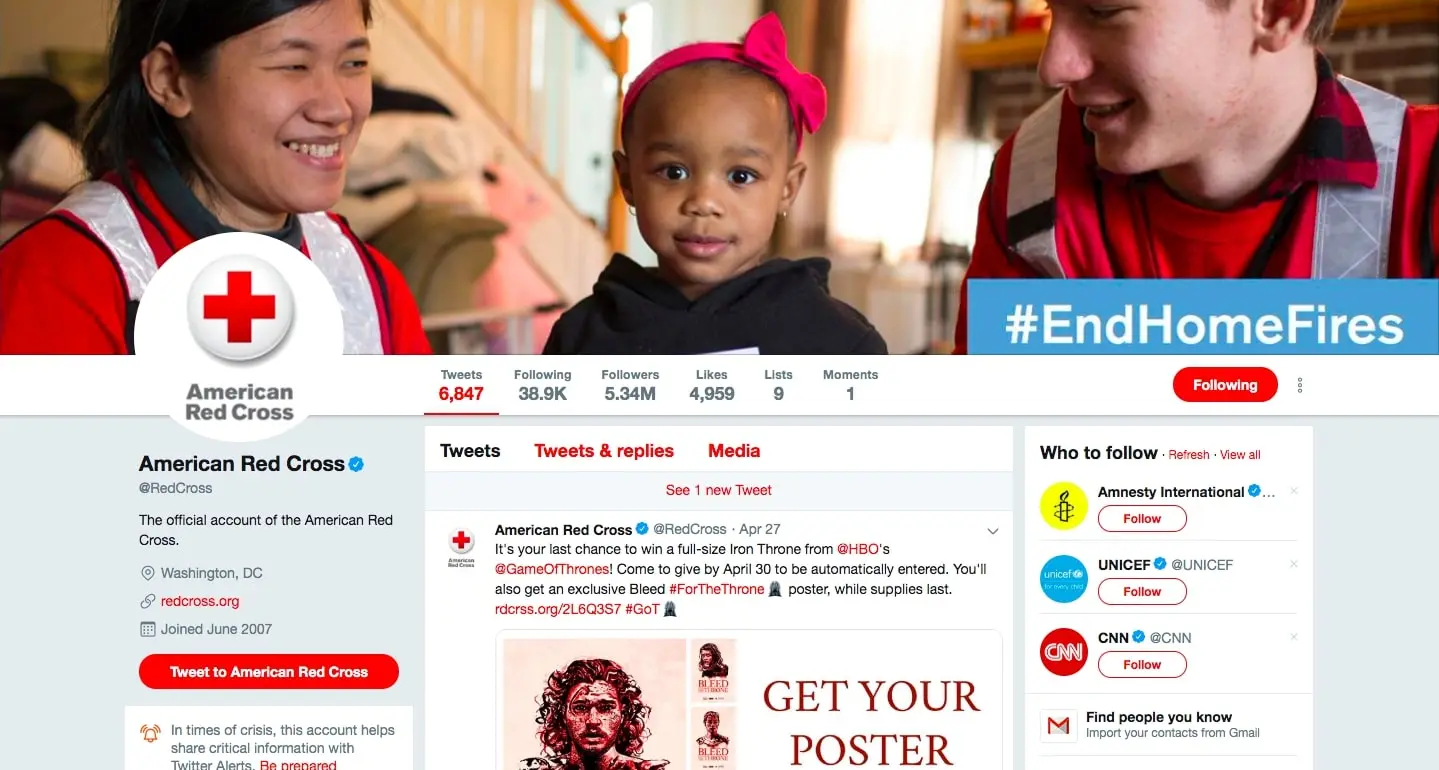
Takeaway: Identify on which social media platforms users are most likely to engage with your nonprofit, and add a call-to-action.
4. Create An Effective Content Strategy For Your Nonprofit
Now that you have identified the goals, audience and the suitable social networks for your nonprofit, the next thing is to create an effective content strategy, i.e., create the content mix that abides by your goals, content category, and posting frequency.
Type Of Content
Contemplate what type of content is useful for spreading your message and keeping your audience hooked. You can start by examining what performed well in the past. Ask your supporters about the type of stories they'd like to see from you.
Also, ask yourself the following:
- Do you need a lot of visual elements such as images, GIFs and videos?
- Do you want to write shorter texts or more prolonged, in-depth articles?
- Will your content be in the form of a call-to-action or mainly in the form of entertainment?
Red Cross shares a variety of posts -- from pictures and graphics to short videos, gifs, and text -- across its social networks. Visual content helps Red Cross share powerful moments from events which trigger emotions in a way that words alone cannot.
Note: Here is your guide to social media image sizes that would help you stay on the top of your content marketing strategy.
Categorize Your Content
Consider categorizing your content for social media; otherwise, you'll end up sharing the same content, which gets monotonous.
When you have a look at Red Cross's Home Fire campaign's content strategy, you will discover that they have developed fantastic content categories for social media that they cycle through regularly. They share content like:
-
Victim Stories And Volunteer Spotlights
Red Cross wants their audience to take action by seeing their posts regarding home fires. The organization is even giving its audience enough reasons to take an action by consistently telling stories about volunteers and victims, with which their audience would feel connected on a deep, personal and emotional level.
For Gilbert's family, smoke alarms made all the difference when his house caught fire. This weekend, volunteers will begin installing smoke alarms across the country to help keep families like his safe: https://t.co/6dWRe8mREb #EndHomeFires pic.twitter.com/TIV2B1XOVB
— American Red Cross (@RedCross) April 23, 2019
-
Data And Facts
Along with mentioning their own stories and best practices, Red Cross is also takes help of the stats. It is using some facts and figures related to its mission to make the users understand the severity of the social cause that they are addressing through their home fire campaign.
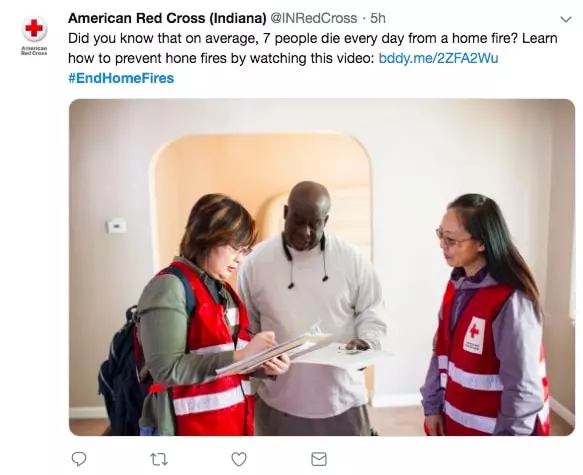
-
How-Tos Of Installing Smoke Alarms In Home
One of Red Cross' Home Fire campaign goal is to educate people about home fire safety, and they are doing it very well! There's no denying that Red Cross is successfully educating people to stay safe from the nation’s most frequent and deadliest disaster.
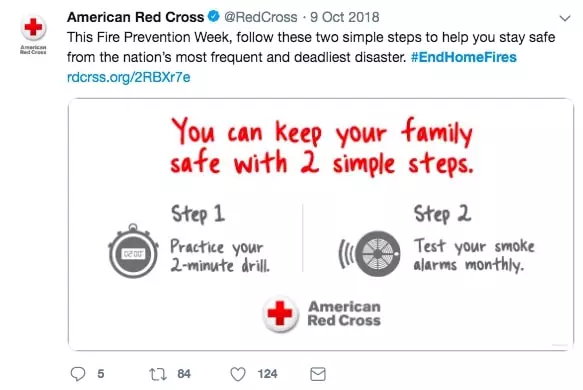
Note:- It is not always essential for you to create original content to share with your audience; you can also curate content from your supporters. Read our guide on how to curate content like a pro.
Posting Frequency
Planning things and making a roadmap of how to go about various tasks will make your life very easy. If you are working in a team, or depend on others for your marketing assets, you should determine a posting frequency. Use an editorial calendar to map out what you’re going to post and then use a social media scheduling tool like Statusbrew.
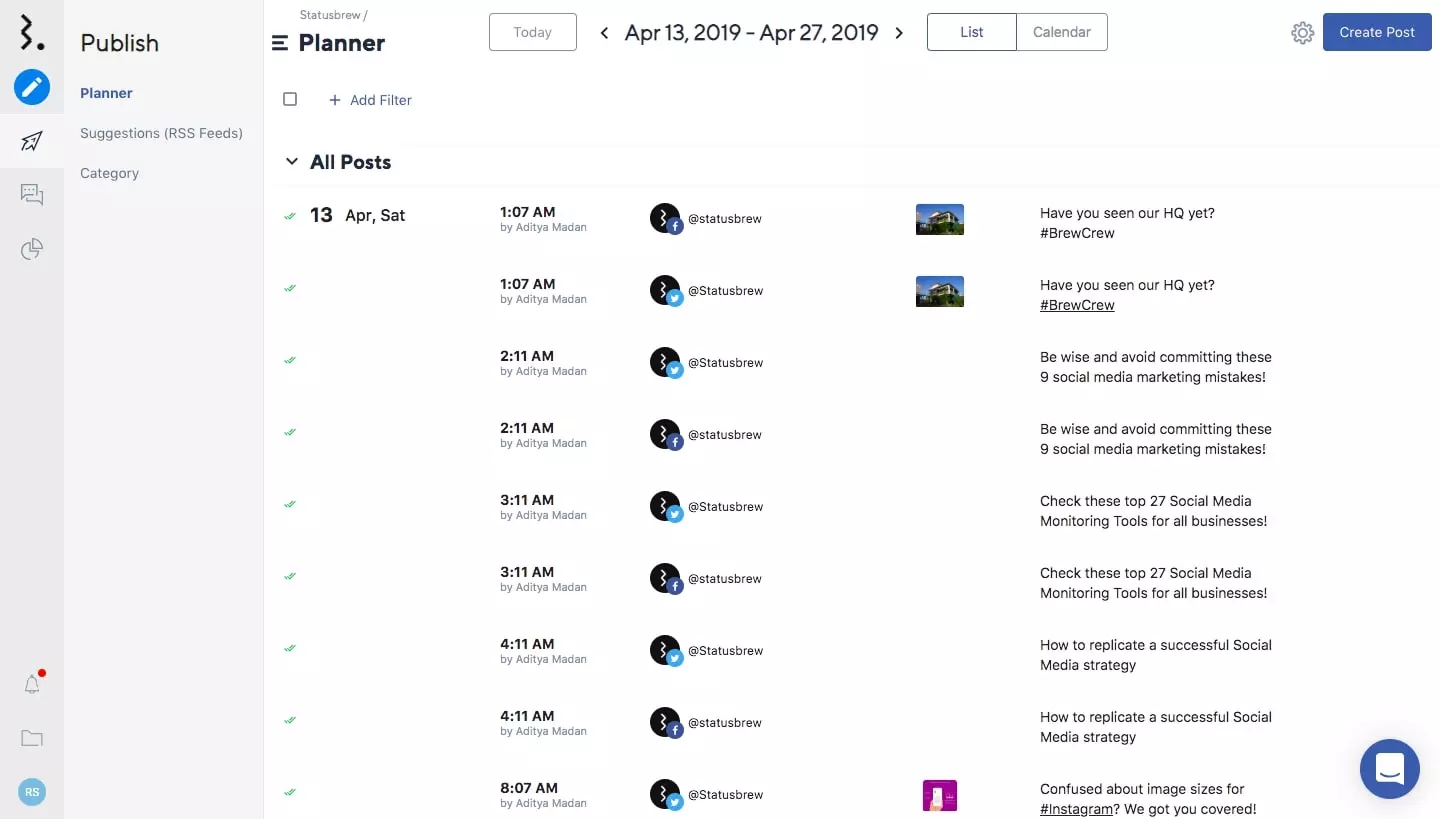
This will let your content be seen over a balanced period while leaving you time to share newsworthy content, manage your community and measure your impact.
Pro Tip: Use Hashtags To Reach A Wider Audience
I'd suggest you to use hashtags. Hashtags are a great source of marketing virality. So use them whenever possible.
For instance: The hashtag #EndHomeFires is widespread and trends regularly. Red Cross used this hashtag to reach a wider audience and enabled them to eliminate suffering caused by Home Fires.
The strategy proved remarkably effective as it was not just an attempt to end the suffering that home fires cause, but to use social media to affect a real change in our world.
5. Make Engagement Your Nonprofit's Priority
Social media is far more than a broadcasting medium -- it is made for two-way conversations, communication and that's when it is most powerful. Engaging your audience should be your priority on social media as it empowers you to capture people’s interest, connect with supporters and build community.
Respond to your audience's questions, doubts, comments and look for relevant hashtags or keywords to find new conversations to join. Community management is very important, especially for nonprofits because that's what they earn and that very community helps to take forward the cause.
Learn what’s working and what’s not working for you, and then tweak your strategy accordingly for better results. Don't be stagnant and stuck with one thing or idea, keep trying out new strategies and improvising as it is the key to growth.
Part of what Red Cross is trying to do with engagement is to show volunteers, victims, and donors that they are humane not only in person but also on social media. I firmly believe social media accounts that show humanity can get more noticed, mainly when they give quick responses.
Begin listening and replying to the conversations in real time directly from within Statusbrew platform.
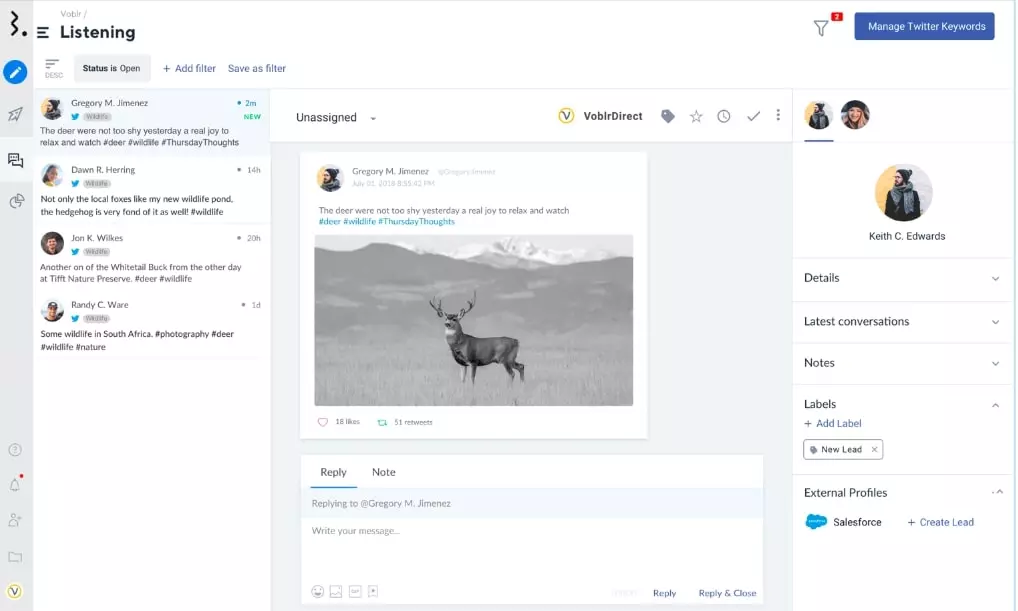
6. Analyze Your Results For An Effective Nonprofit Social Media Strategy
So you've engaged well with your audience, now it's time to dig deep into your social media analytics to ensure that you are progressing towards your goals.
Tracking your social media efforts will help you understand where exactly do you need to invest your time and efforts into social media, and it will further enable you to adjust your content strategy to concentrate on the type of content that performs best.
If you find it challenging to spare time to track and measure your nonprofit's results, this is one of many things where a social media analytics tool will help. It'll enable you to generate the reports based on the metrics chosen by you and analyze your performance on all the pararmeters that matter to you.
Every organization working towards a better world is an inspiration to Statusbrew. Our social media marketing platform provides 50 percent discount to support the humanitarian cause.
Start using Statusbrew to boost your nonprofit's social media strategy across all the crucial steps of publishing and scheduling, engaging the audience and generating customized reports on everything that is important to be tracked -- from sent message performance to audience changes to engagement.
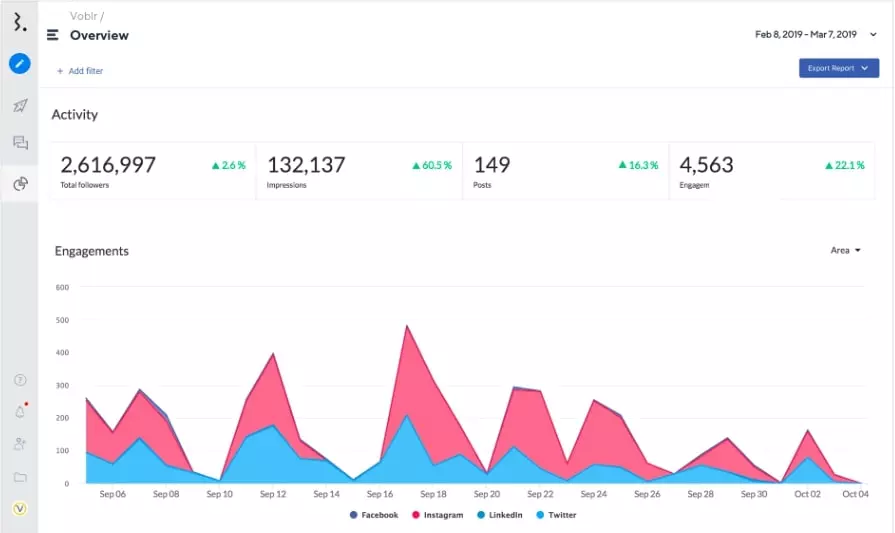
Wrapping Up
Red Cross has been making fantastic use of social media marketing platforms to drive engagement and spread their message to help people in need. Following the methods and tricks used by the Red Cross will help you improve your nonprofit's marketing endeavors.
However, getting your community talking and fine-tuning your nonprofit’s social media strategy for the best possible results is not going to happen in a day. Social media marketing takes time to generate results.
So, be consistent, implement the tips listed above and give your strategies some time to work. In the meantime, keep inspiring, and keep posting, as social media is an amazing platform to reach out people and put out a word for your cause!

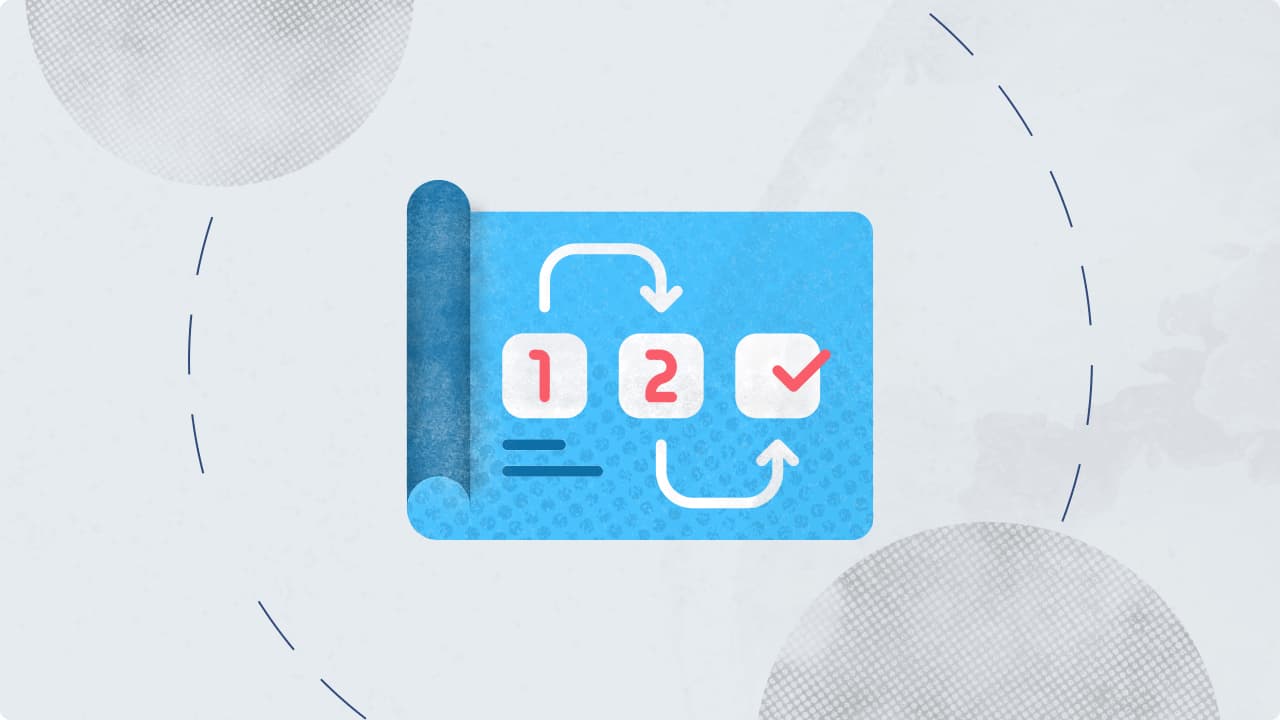


Explore the Statusbrew range of social media tools
Cancel anytime!